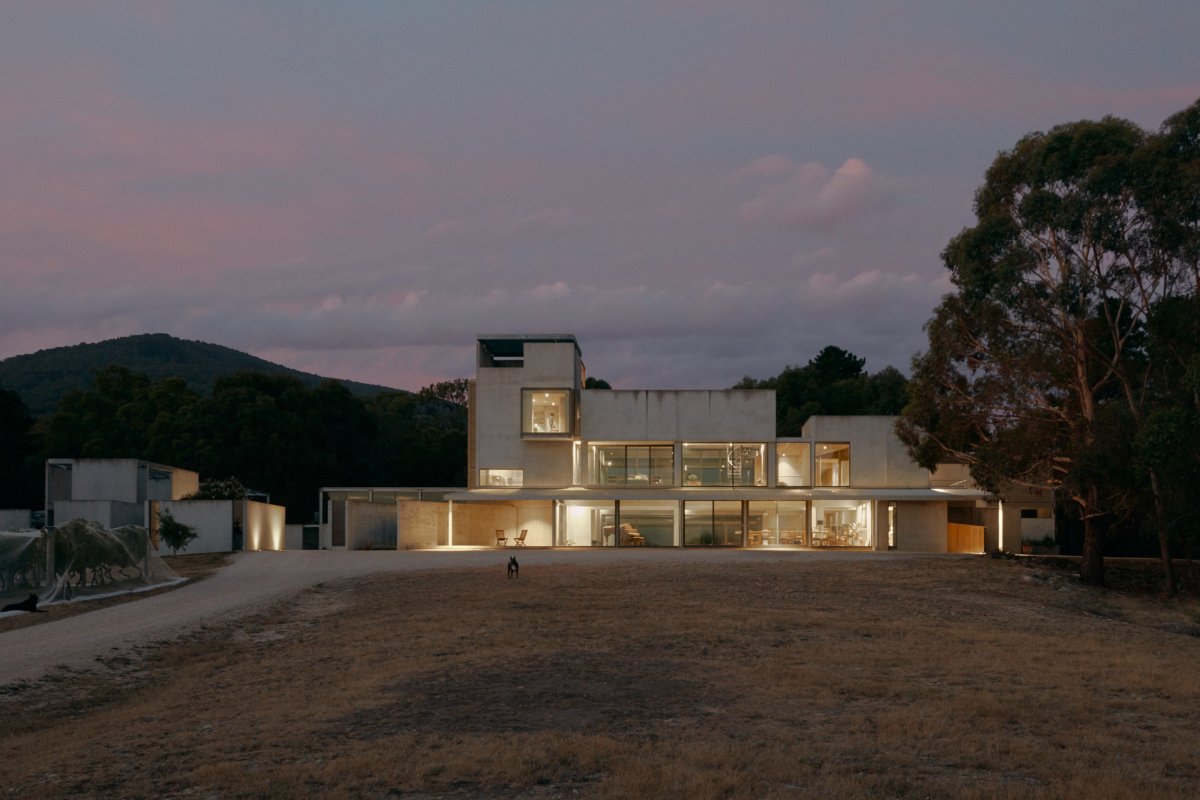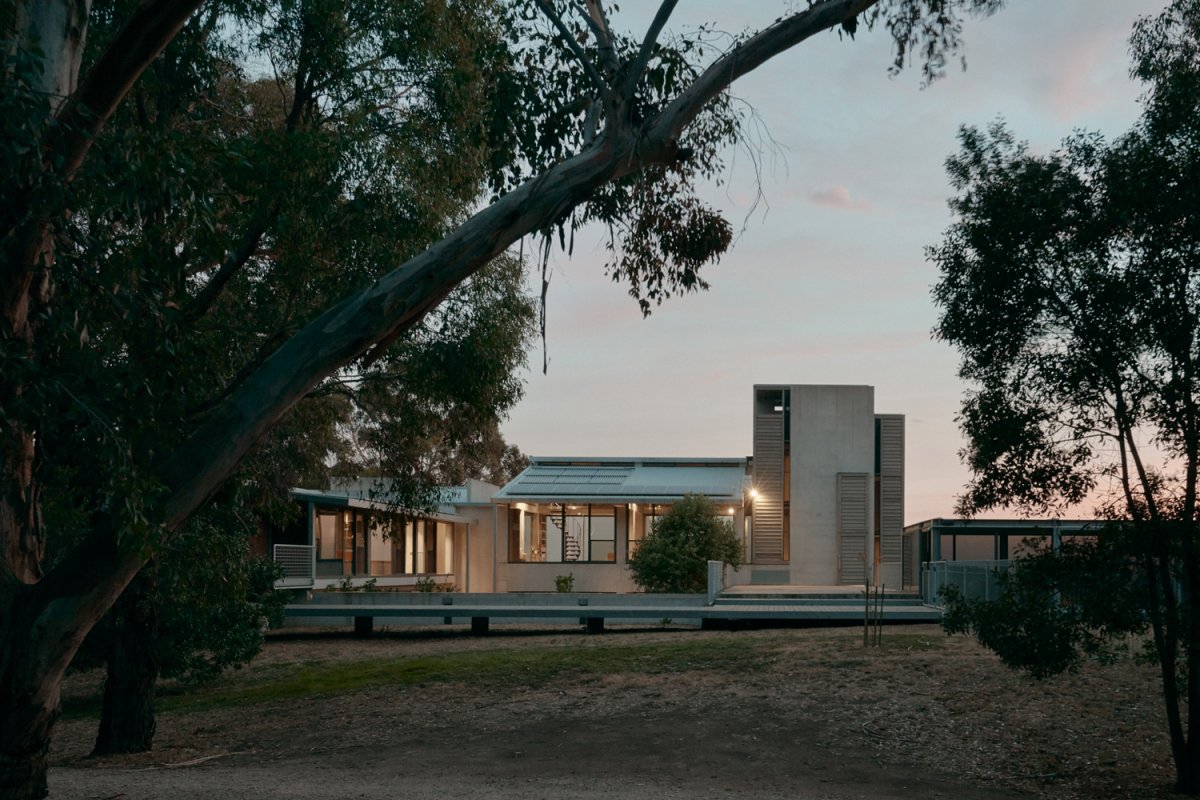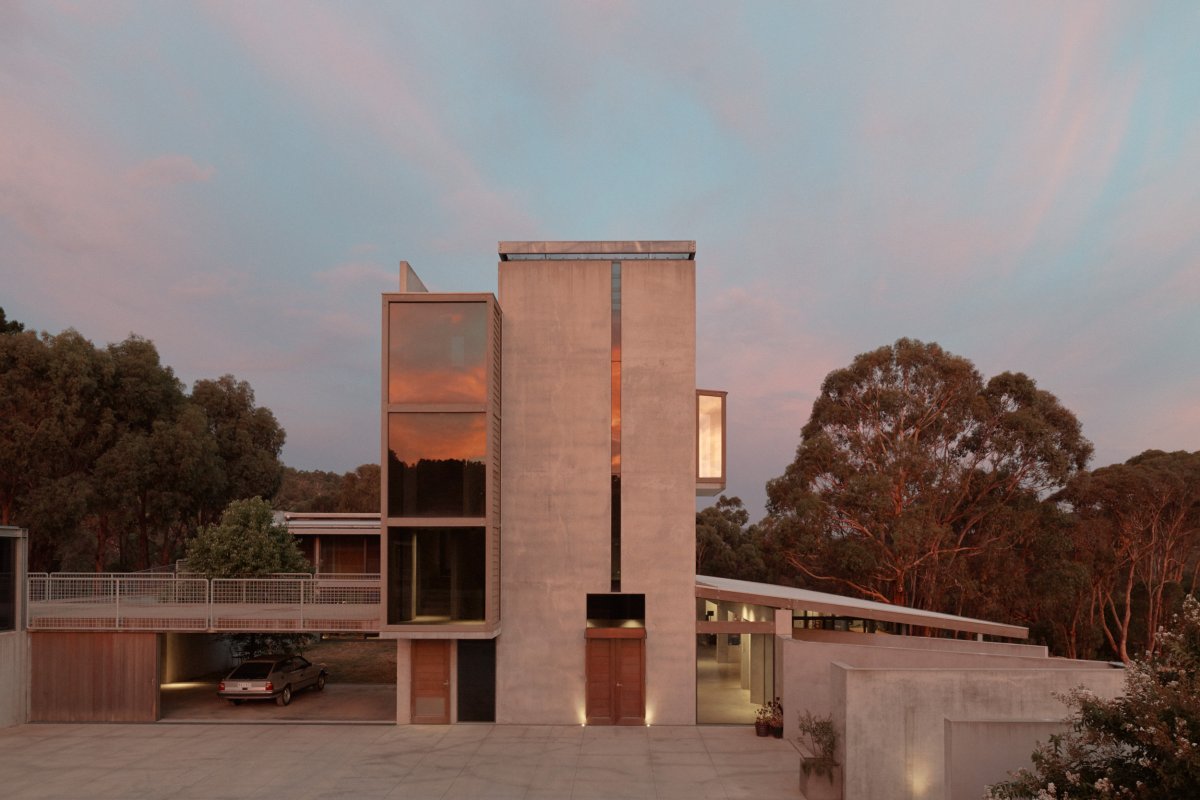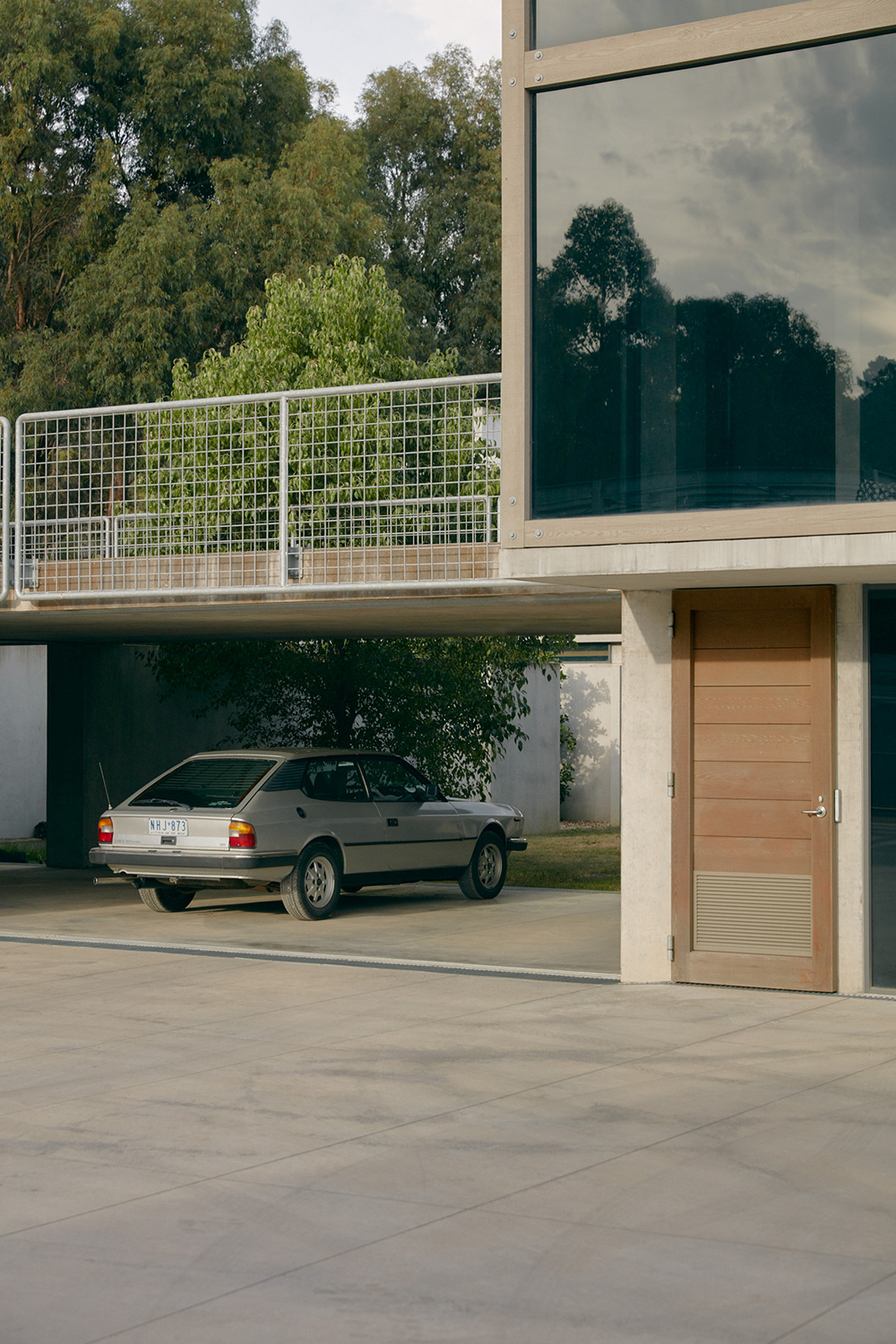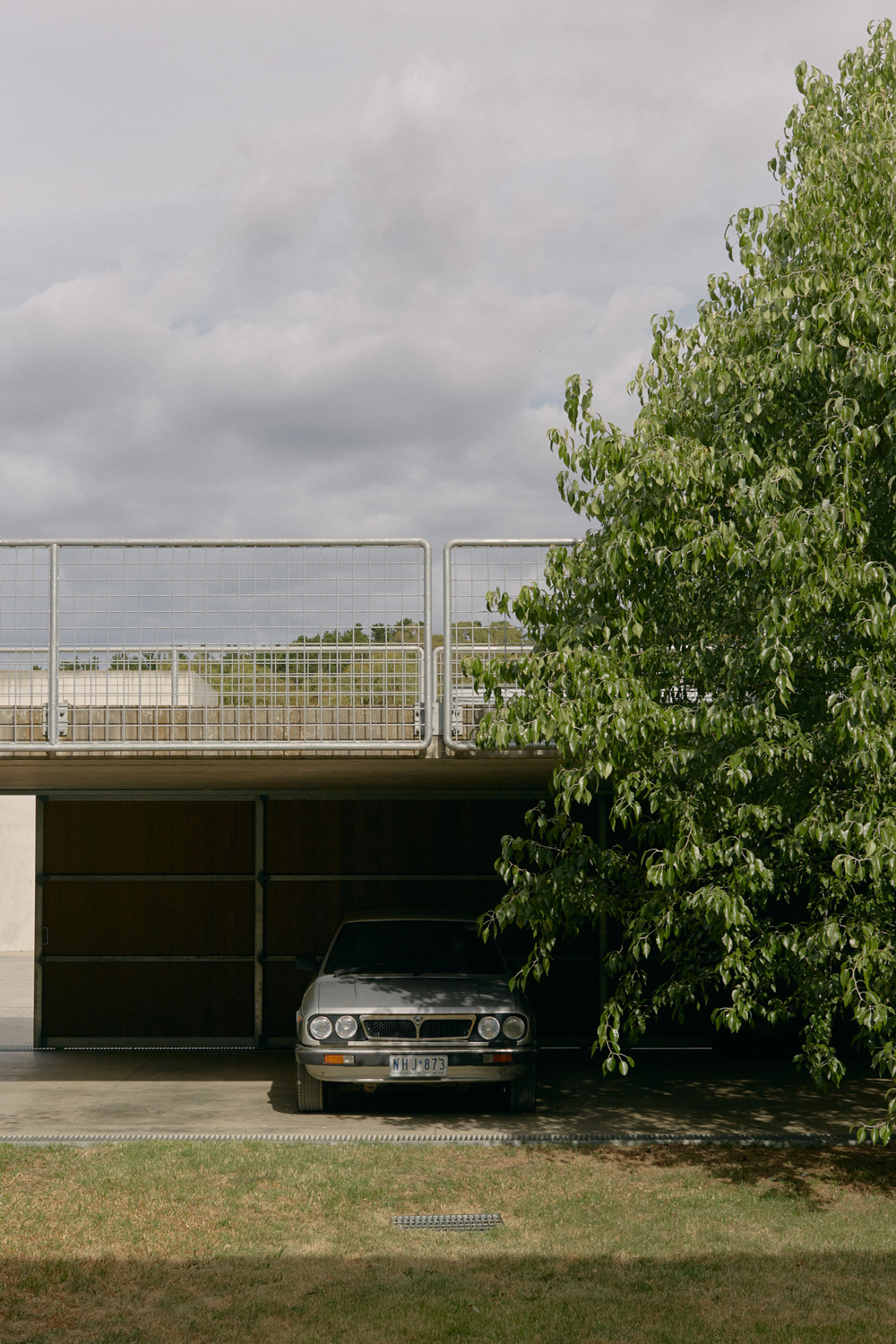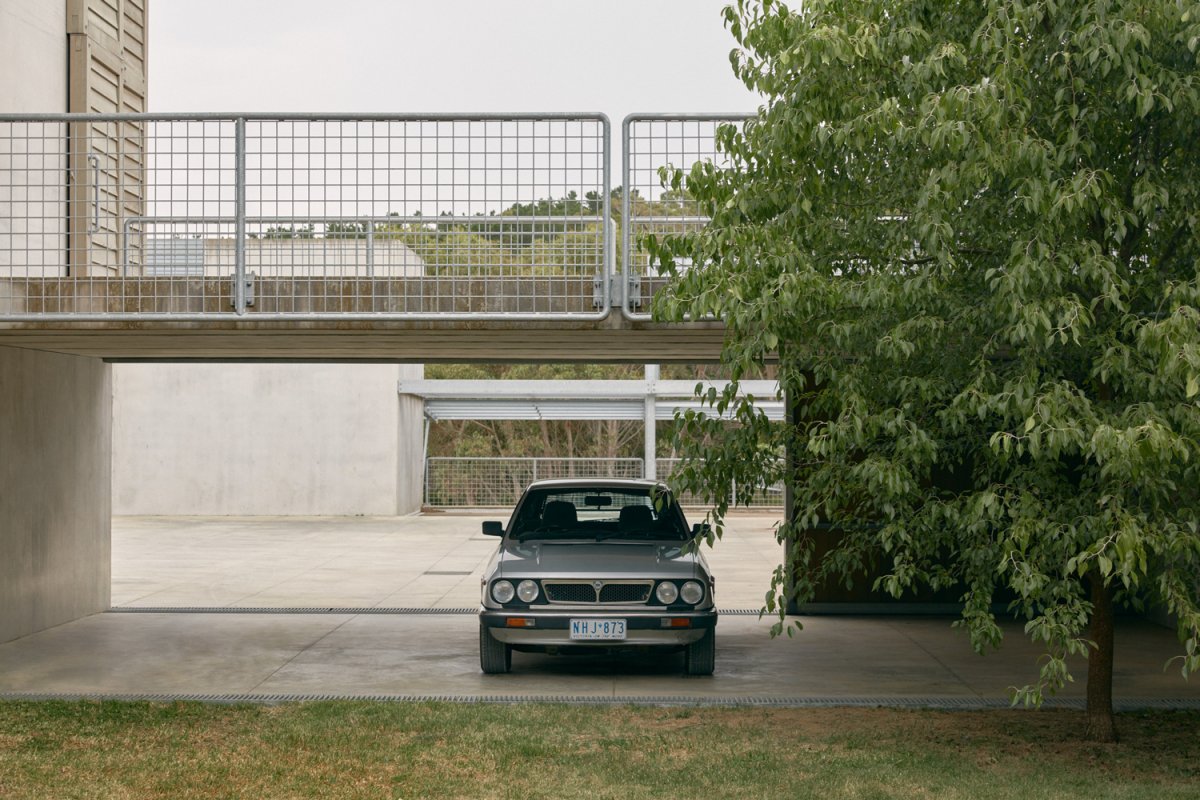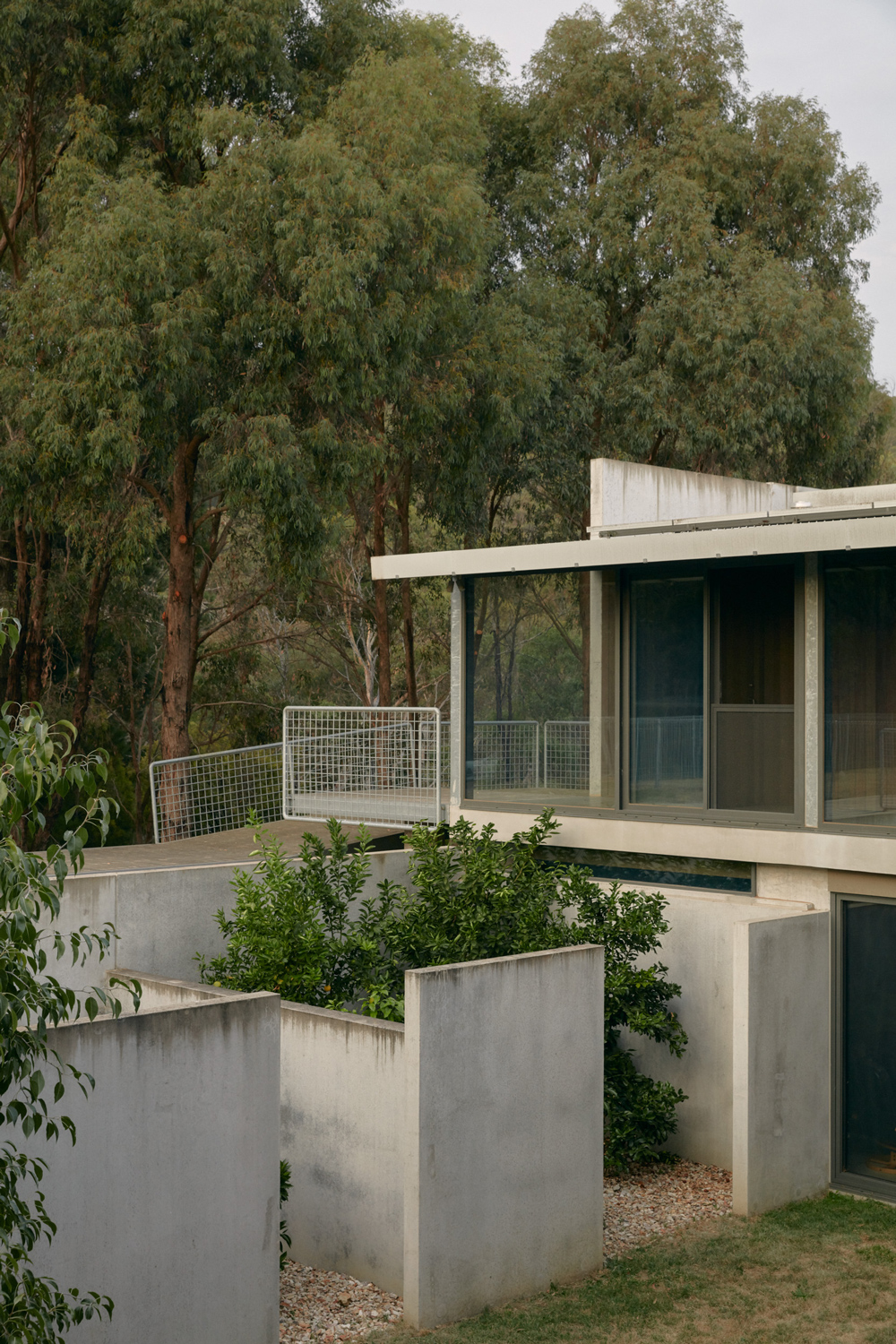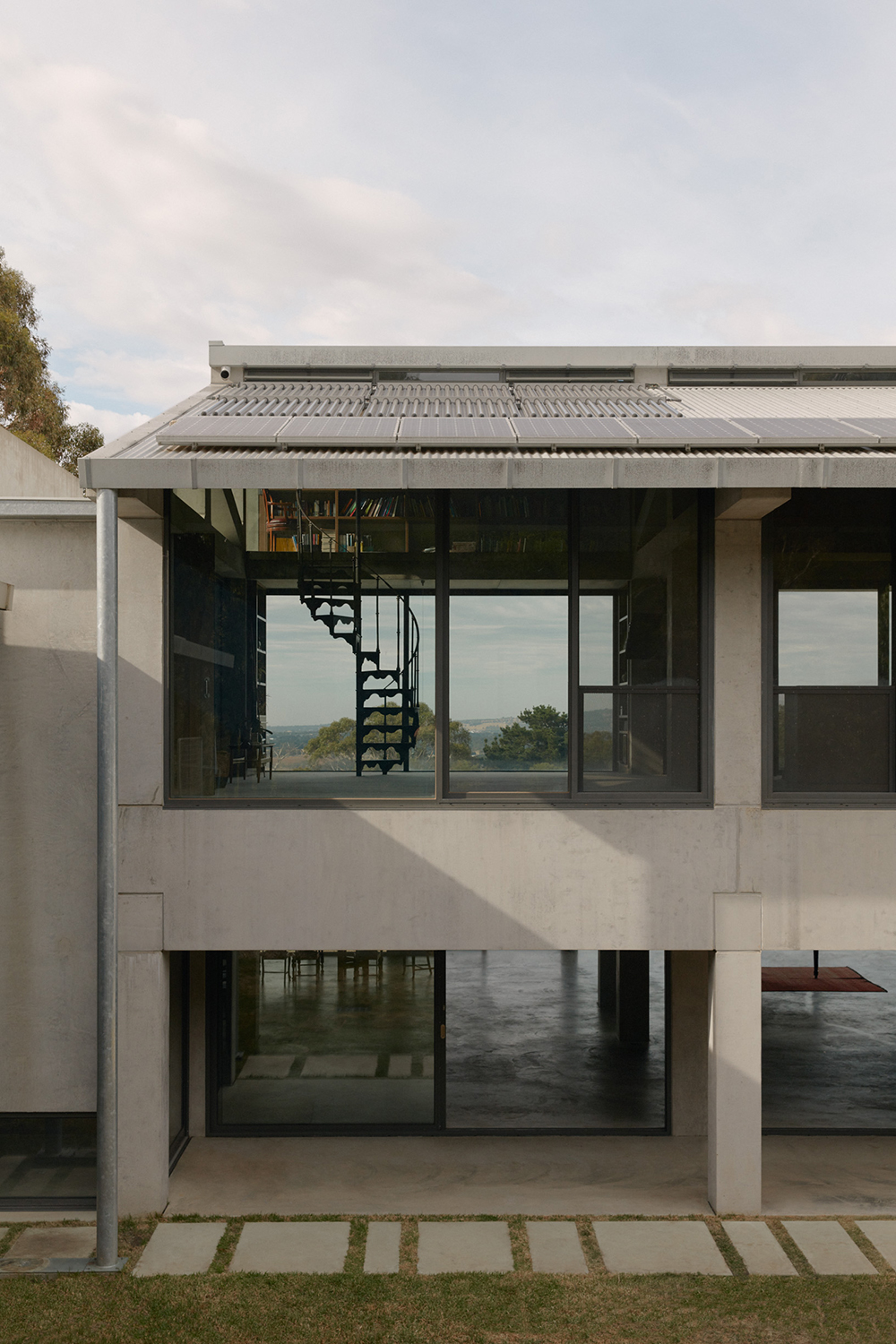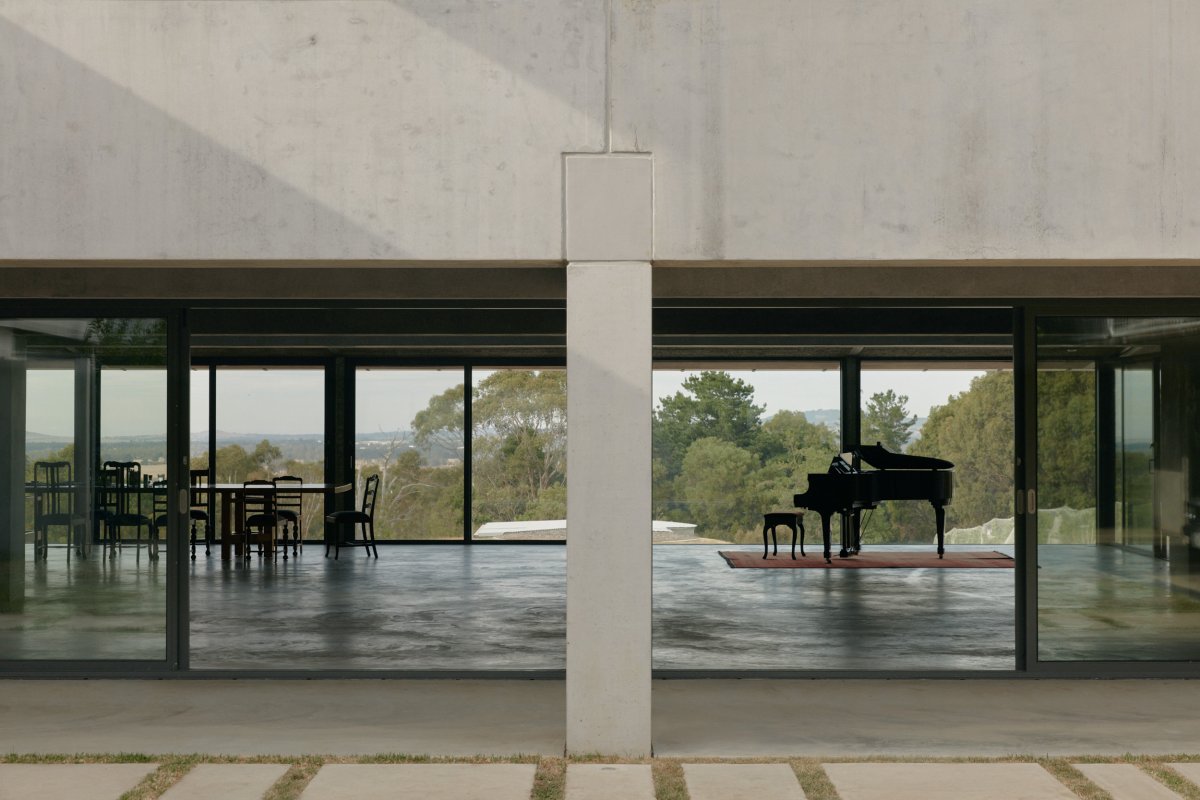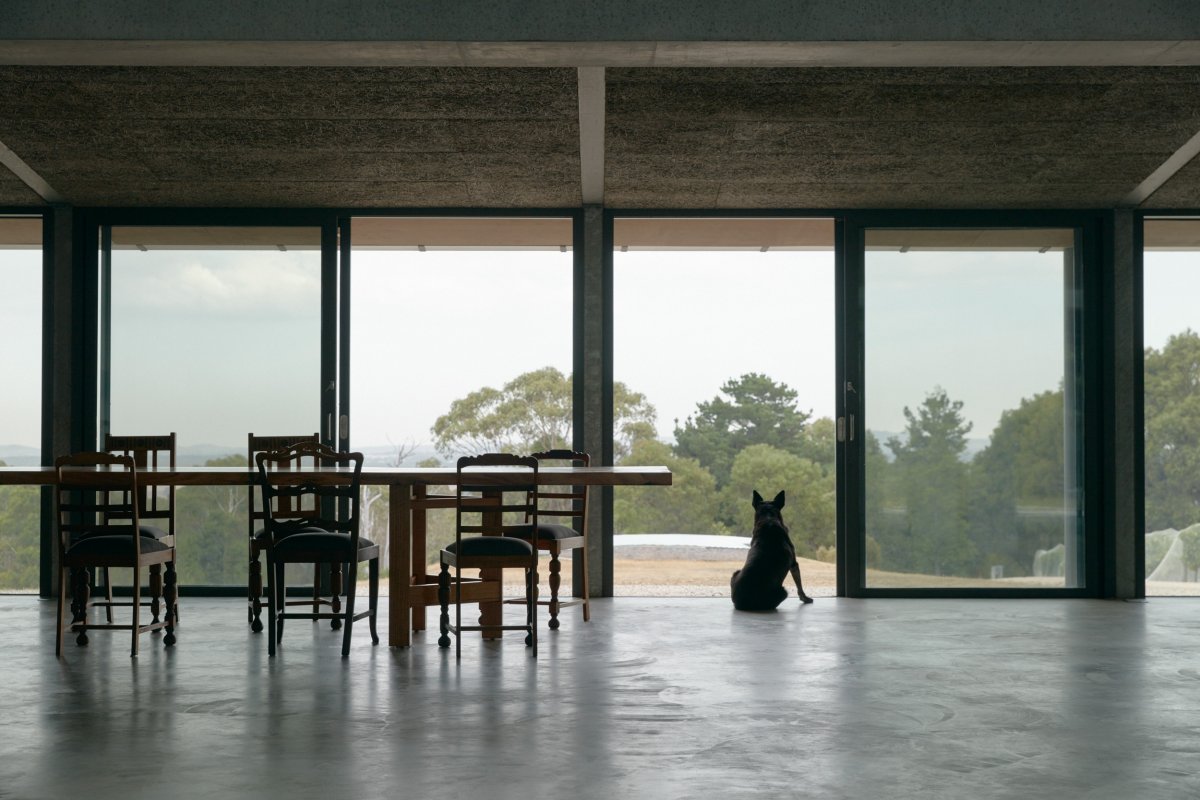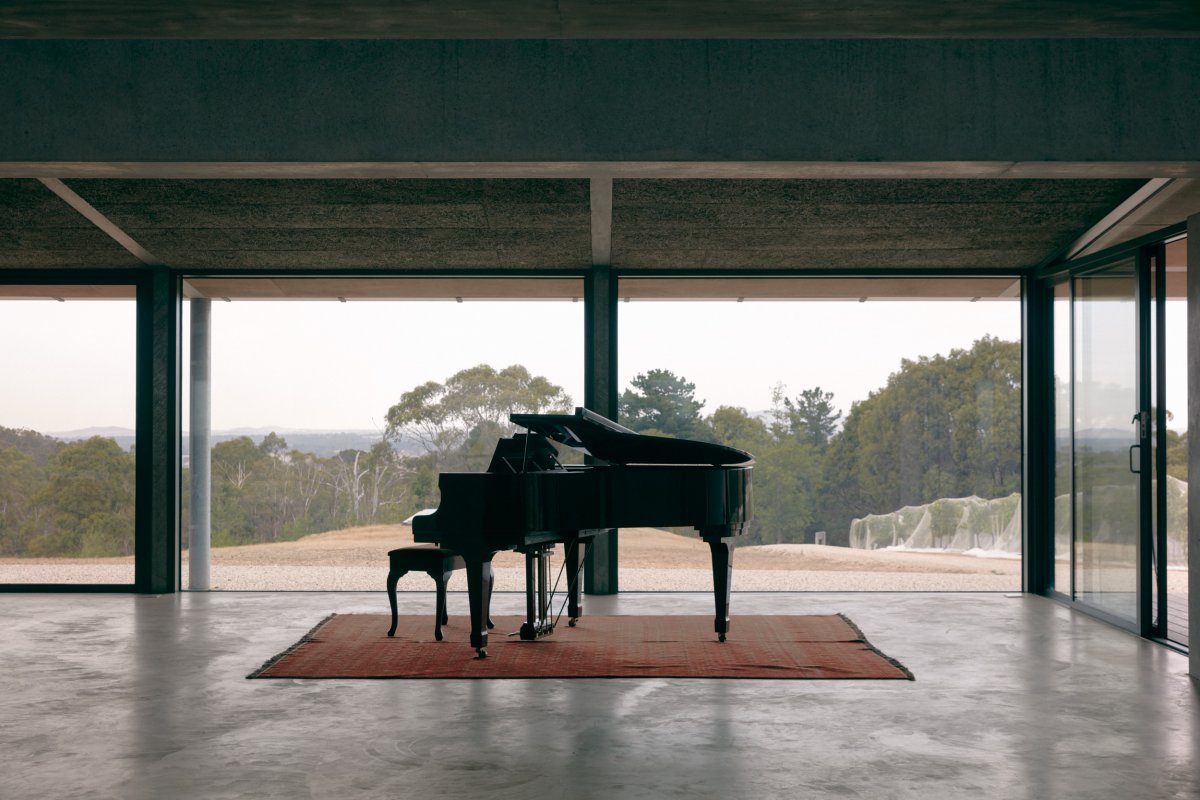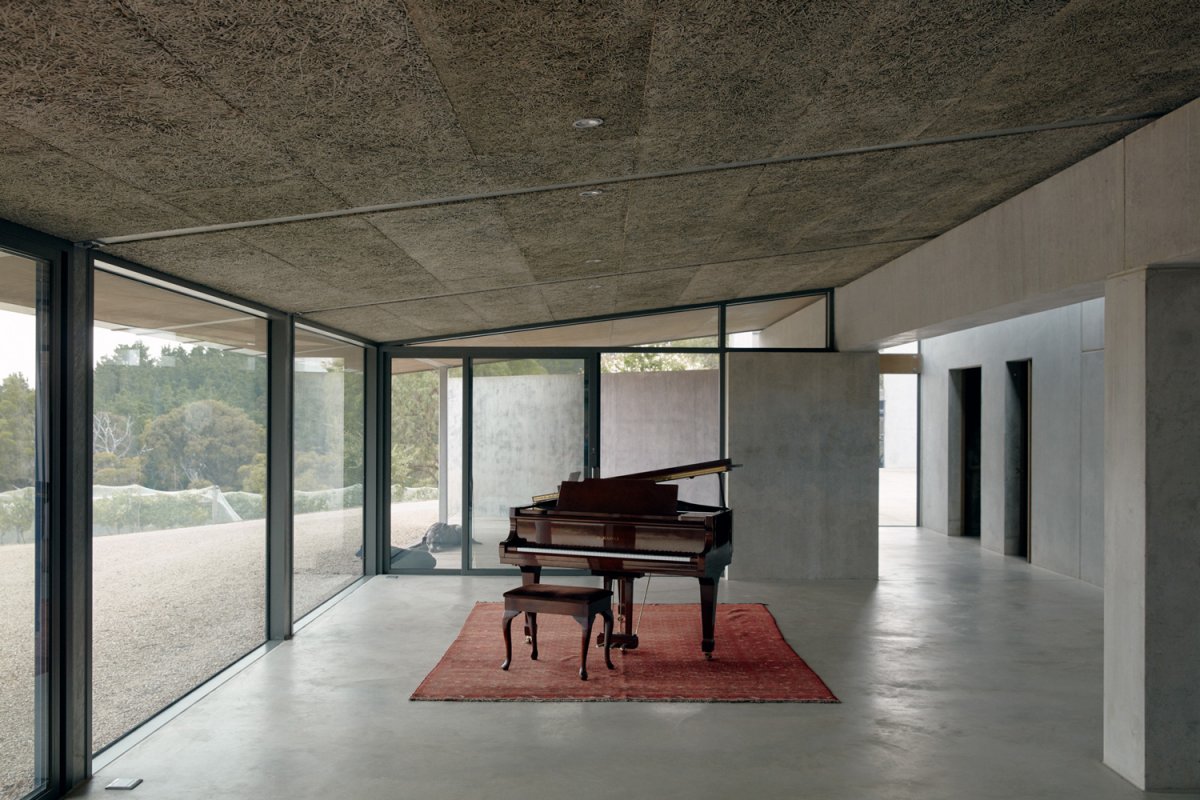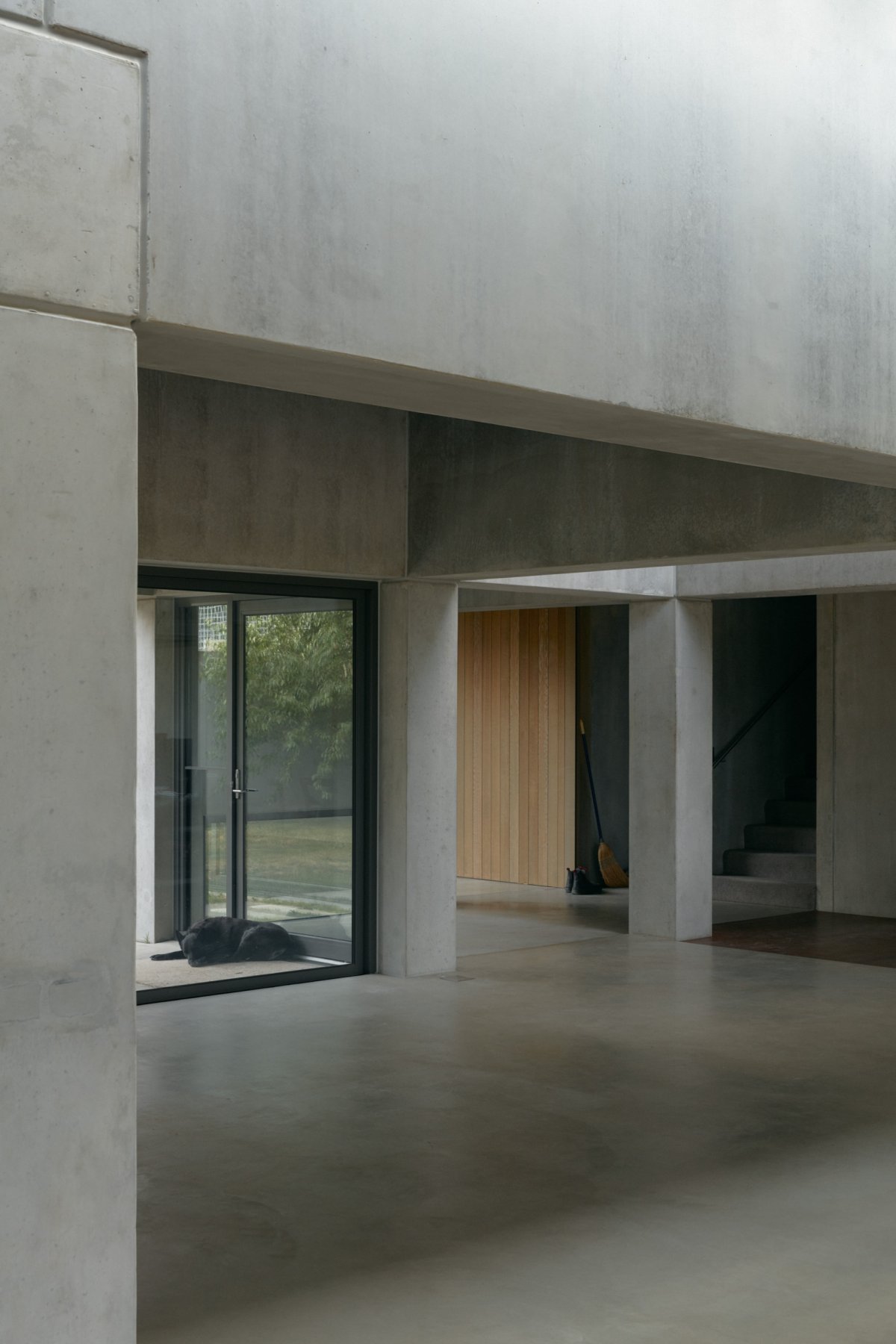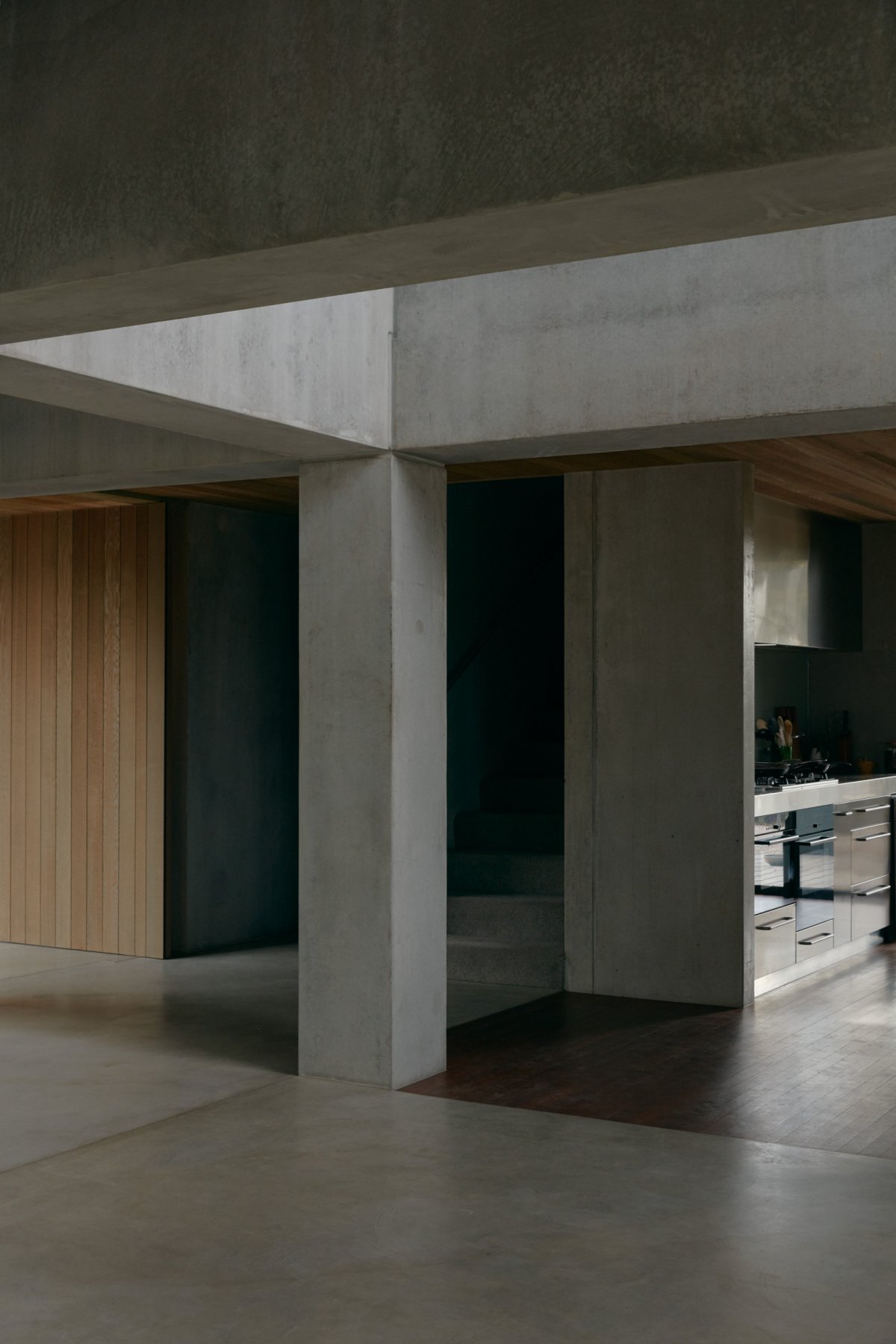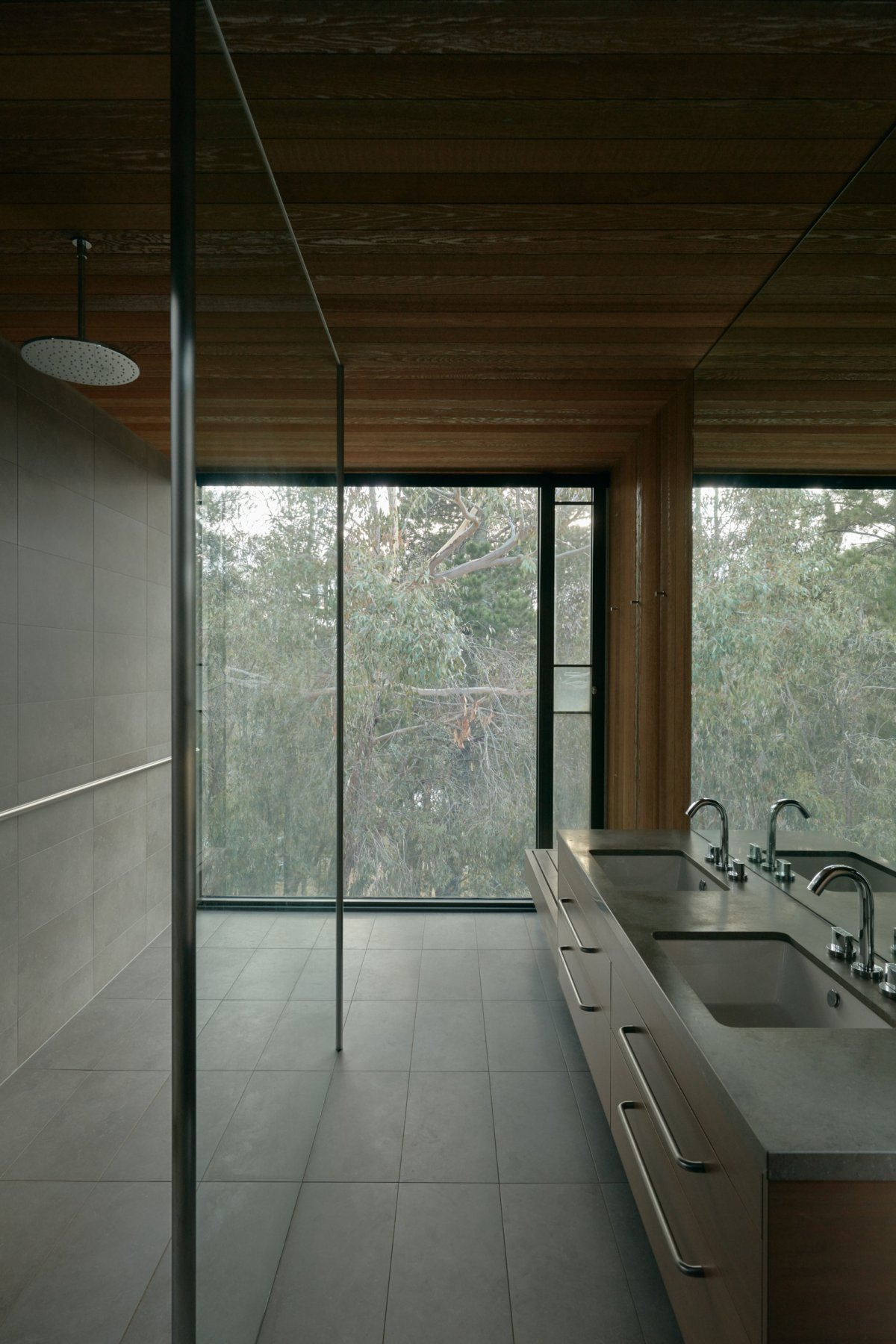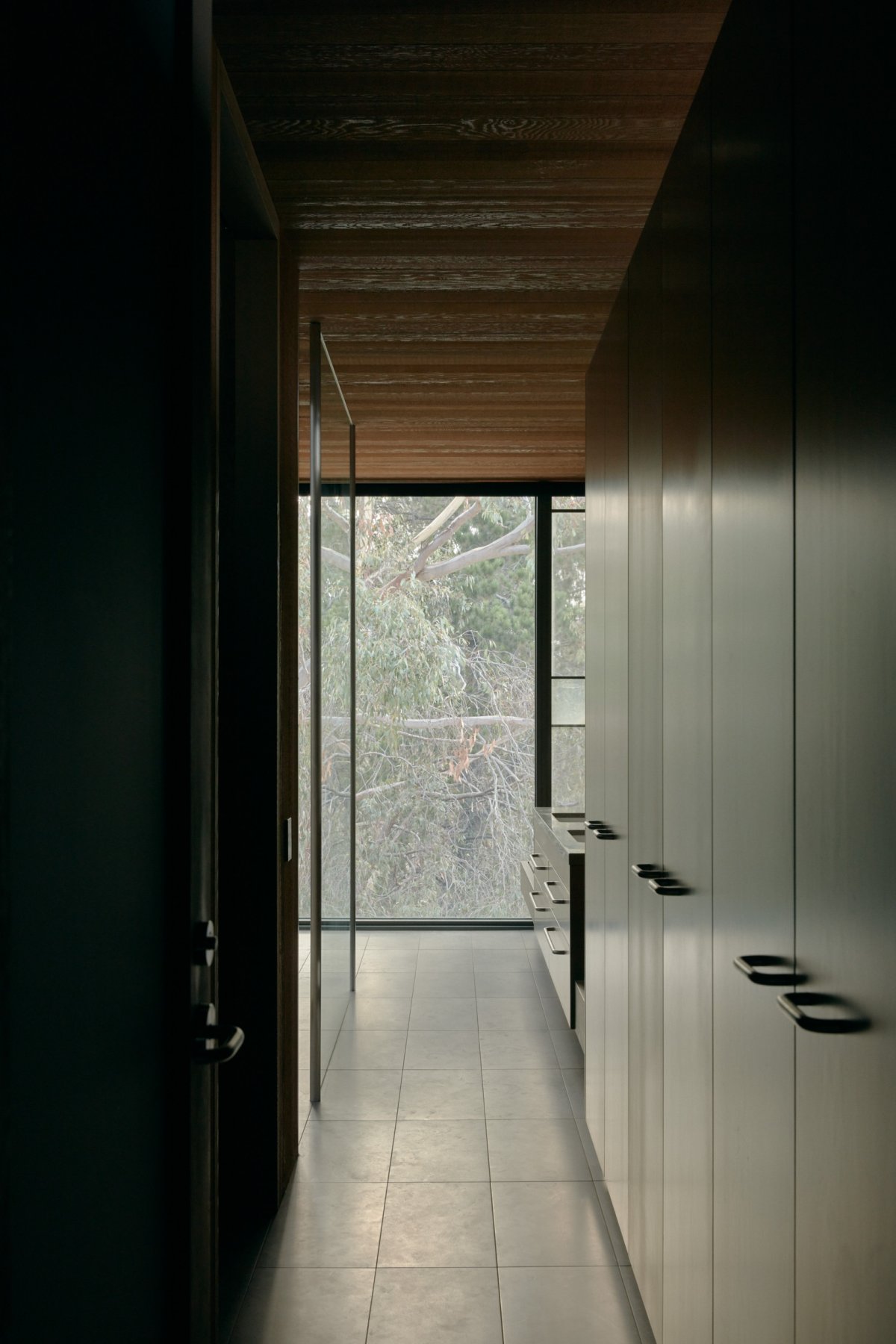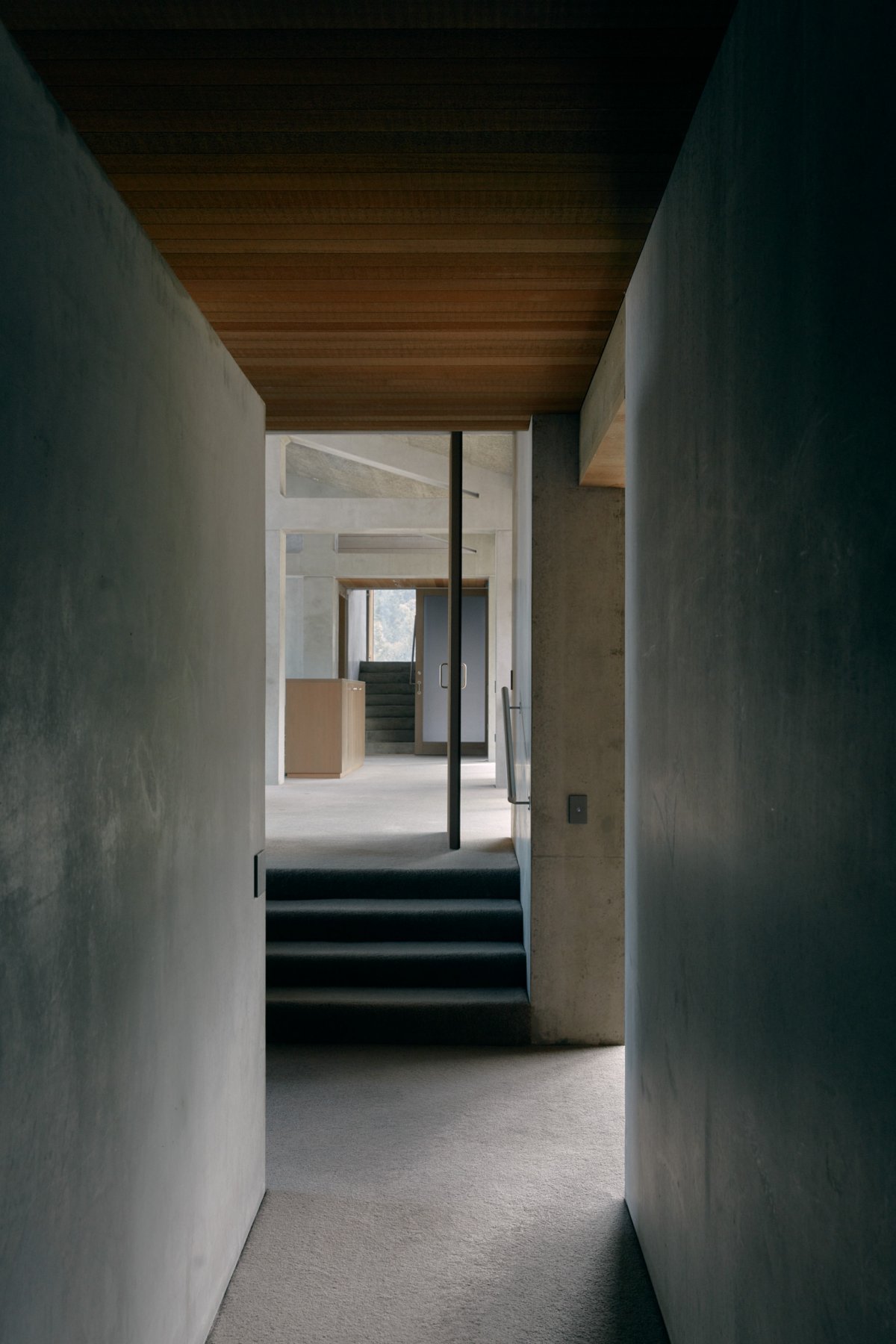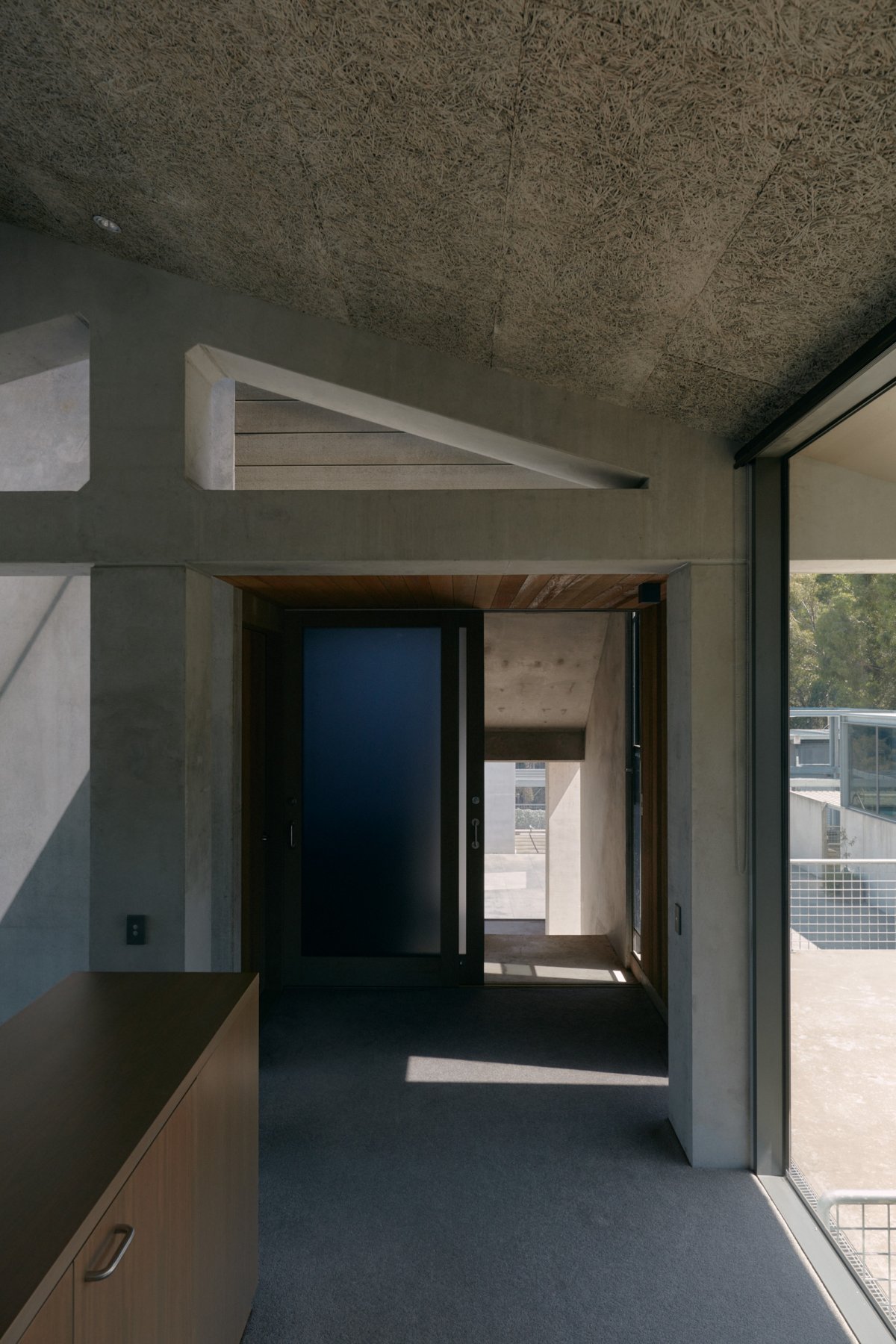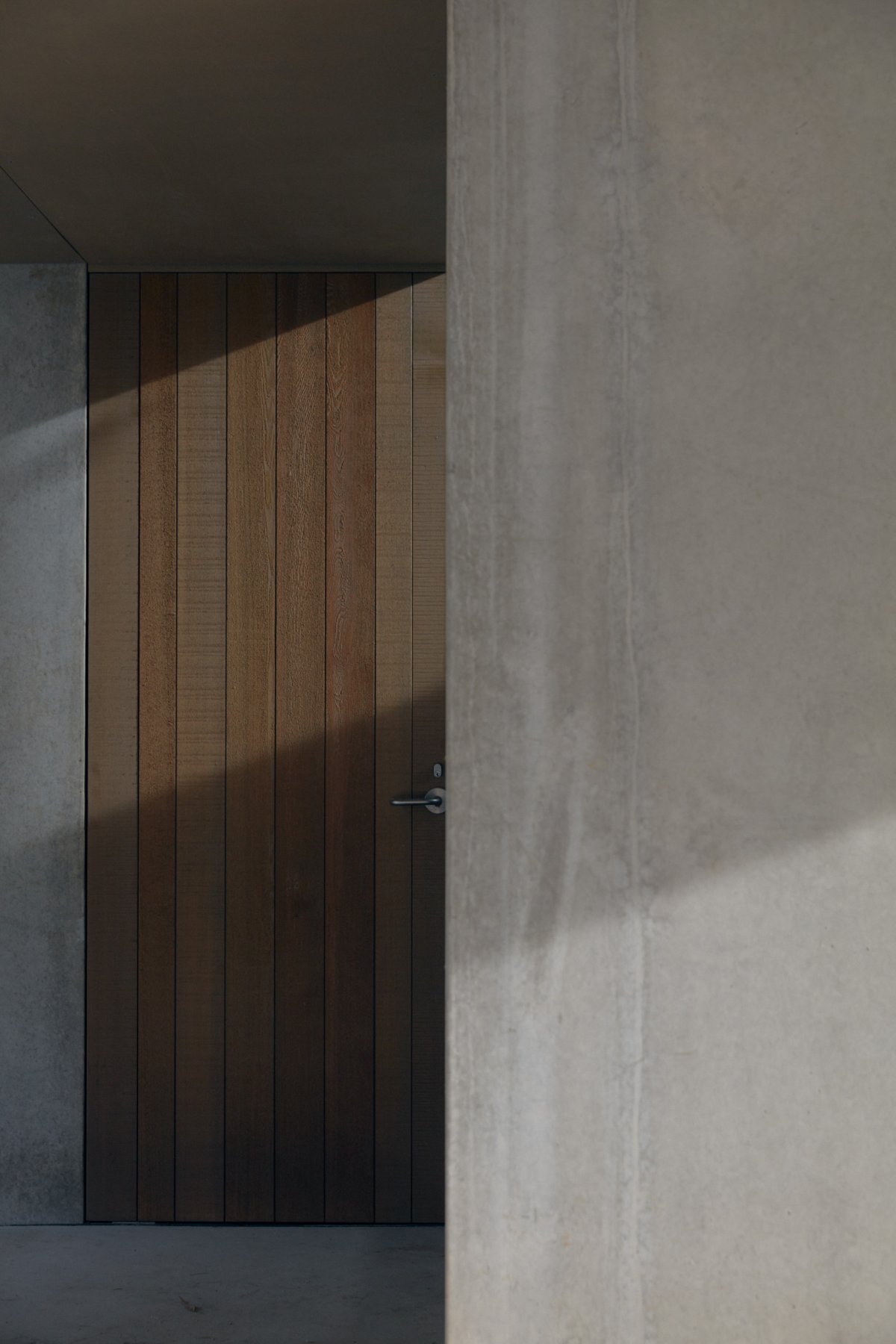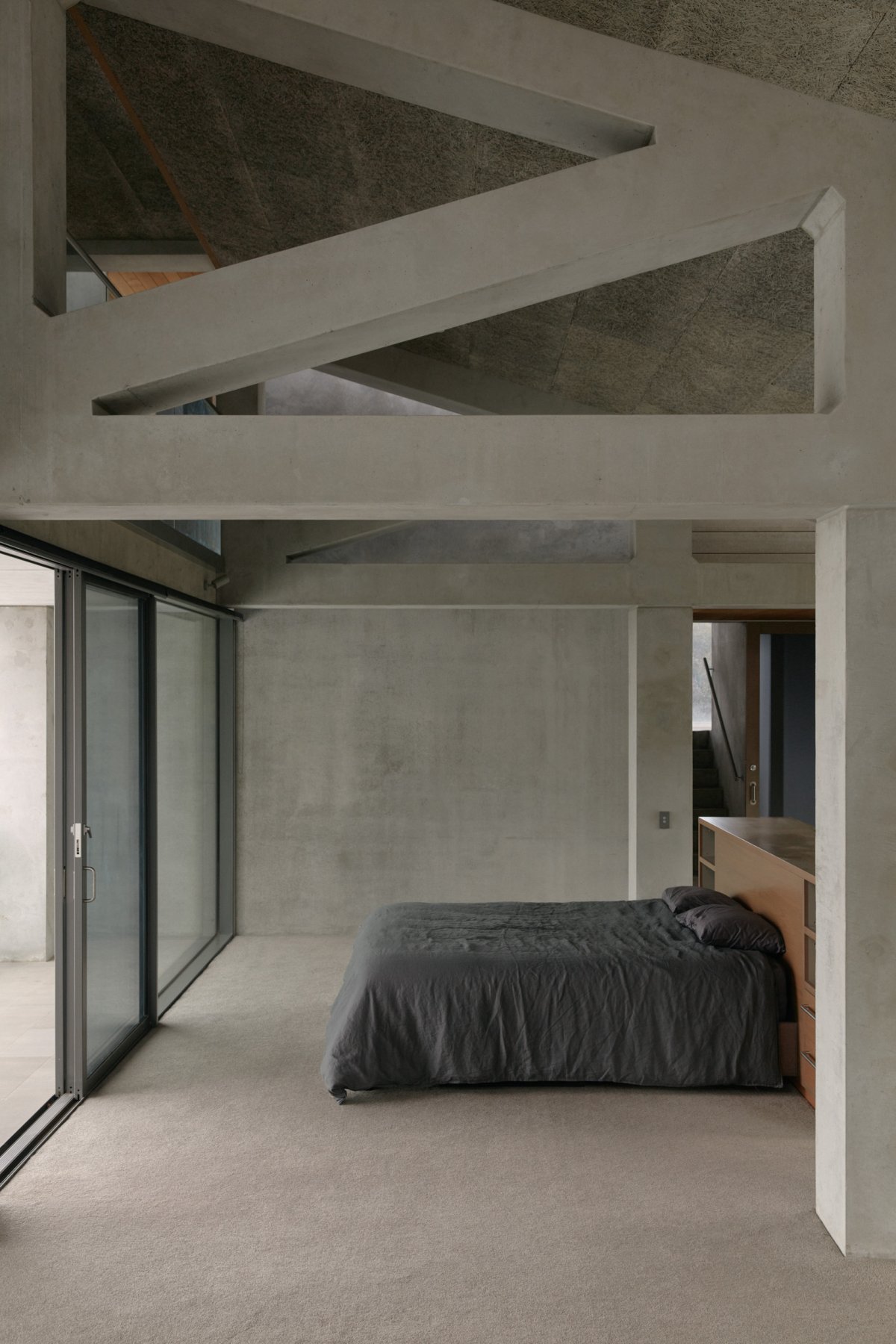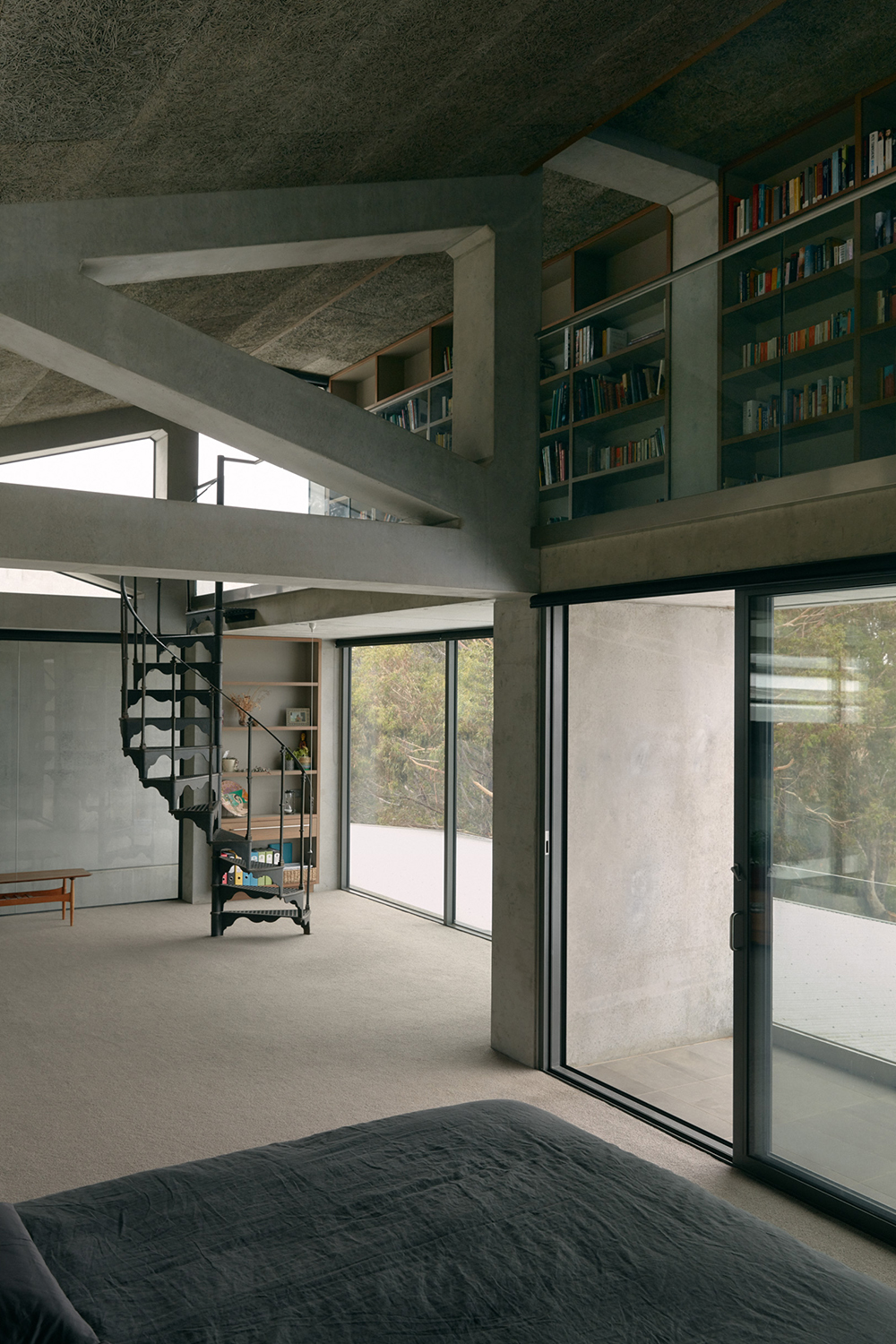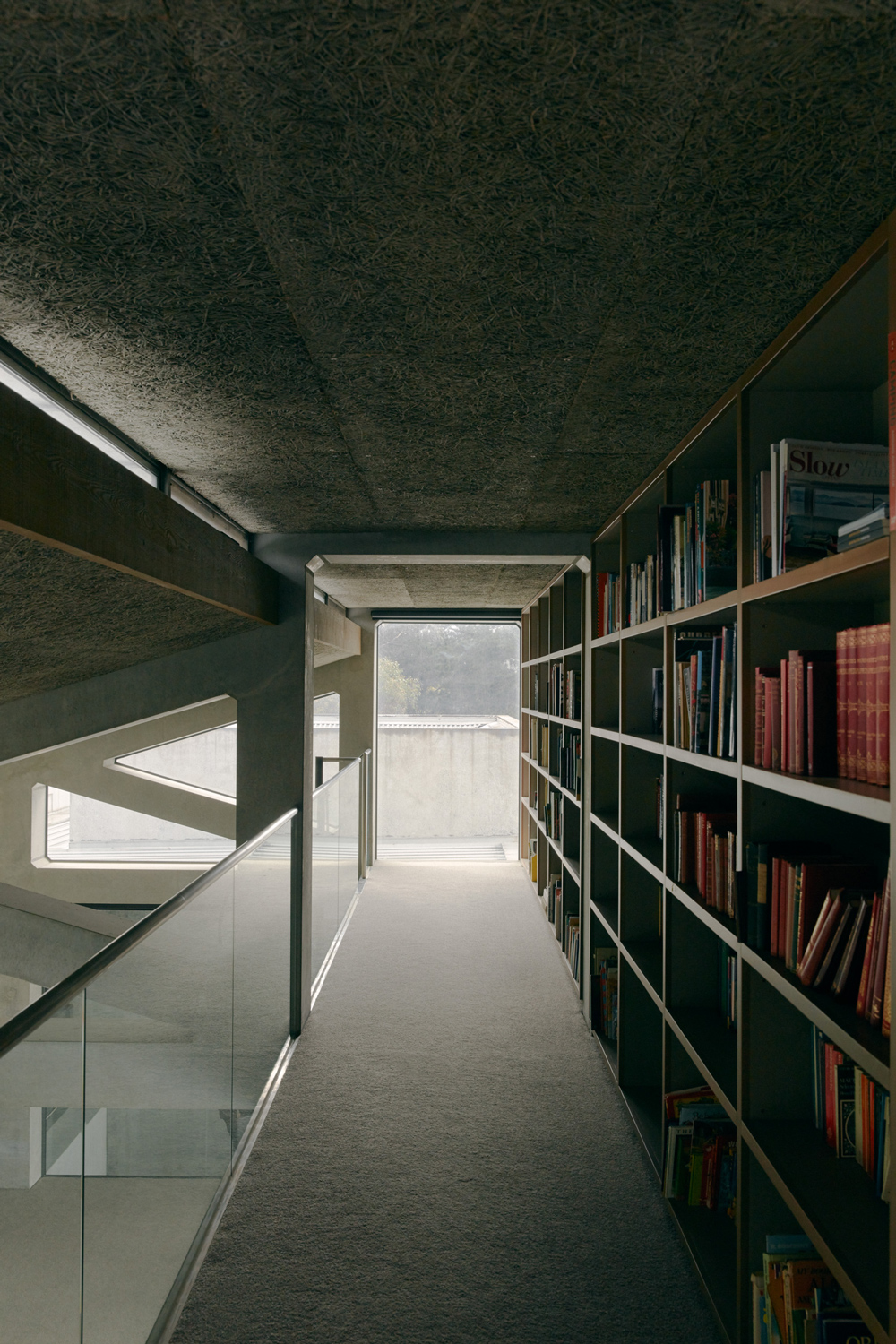
Although Paul Couch has kept a low profile throughout his long career, his work has been quietly admired for years by those who have come into contact with it, and most of his architecture has gone undescribed. His Cremasco House, completed in 2008, is a mixed-use building in Victoria's Macedon Mountains.
Situated within a 5-hectare vineyard on Towrong Hill, As its name suggests, Cremasco House is not just a House, but a building containing space for winemaking and storage, a winery, a cellar, a swimming pool and offices, As well as living areas, a main front yard and several smaller courtyards. It uses only a few materials, mainly concrete, and its walls do not depict much of the building's many functions, instead applying a single arched scheme where it is usually seen as a separate entity.
In all Spaces, there is an overwhelming sense of scale commensurate with the building as a whole. On the upper level, the ceilings are high, the concrete trusses are huge, and the materials are uncompromising. At ground level, the reduced ceiling height only magnifies the breadth of the space, which is punctuated by huge concrete columns. Standing high underground on the west side of the tower at sunset, you'll experience an almost transcendental moment as the red sun fills the long strip of glass that flows down the center of the tower. It contributes to what Michae describes as Paul Couch's sense of work, that "architecture will live on for all of us." It's not just the quality of a substance, it's the scale of it. These Spaces don't feel entirely human. It's like these Spaces were built for another purpose, and now we're just here to occupy them. We will pass and the building will remain."
Cremasco House is asked to do more than most buildings. Grapes are brought in from where they are harvested, pressed and fermented. Wines are cellared, gin distilled, guests are welcome, and meals are shared. As the season passes and the harsh summer gives way to the cold winter, all the activities of daily life rise and fall with it. Throughout, the serenity of the building has been there, reflecting the power and subtlety of Paul Couch's work.
- Architect: Paul Couch
- Photos: Tom Ross
- Words: Rose Onans

